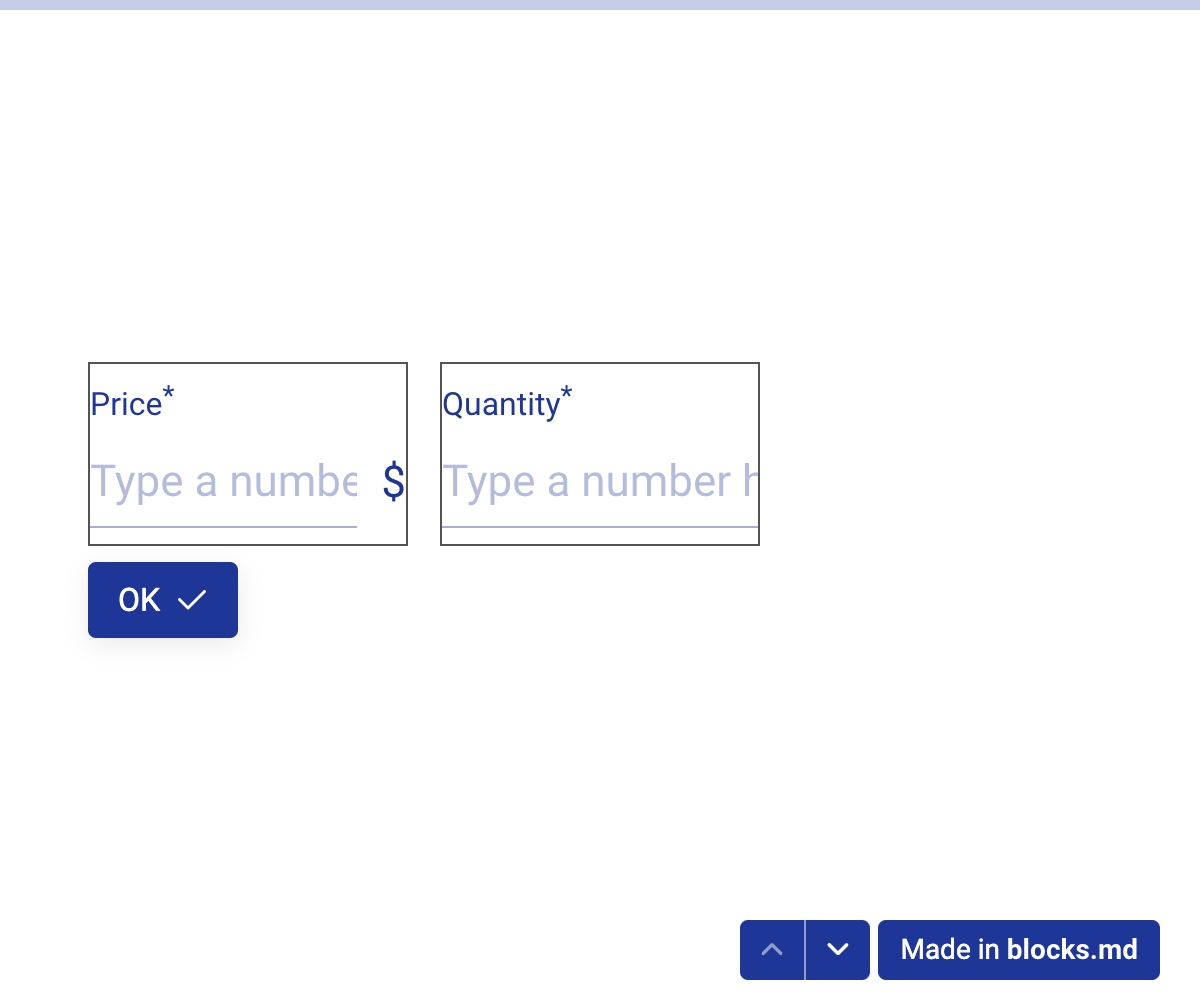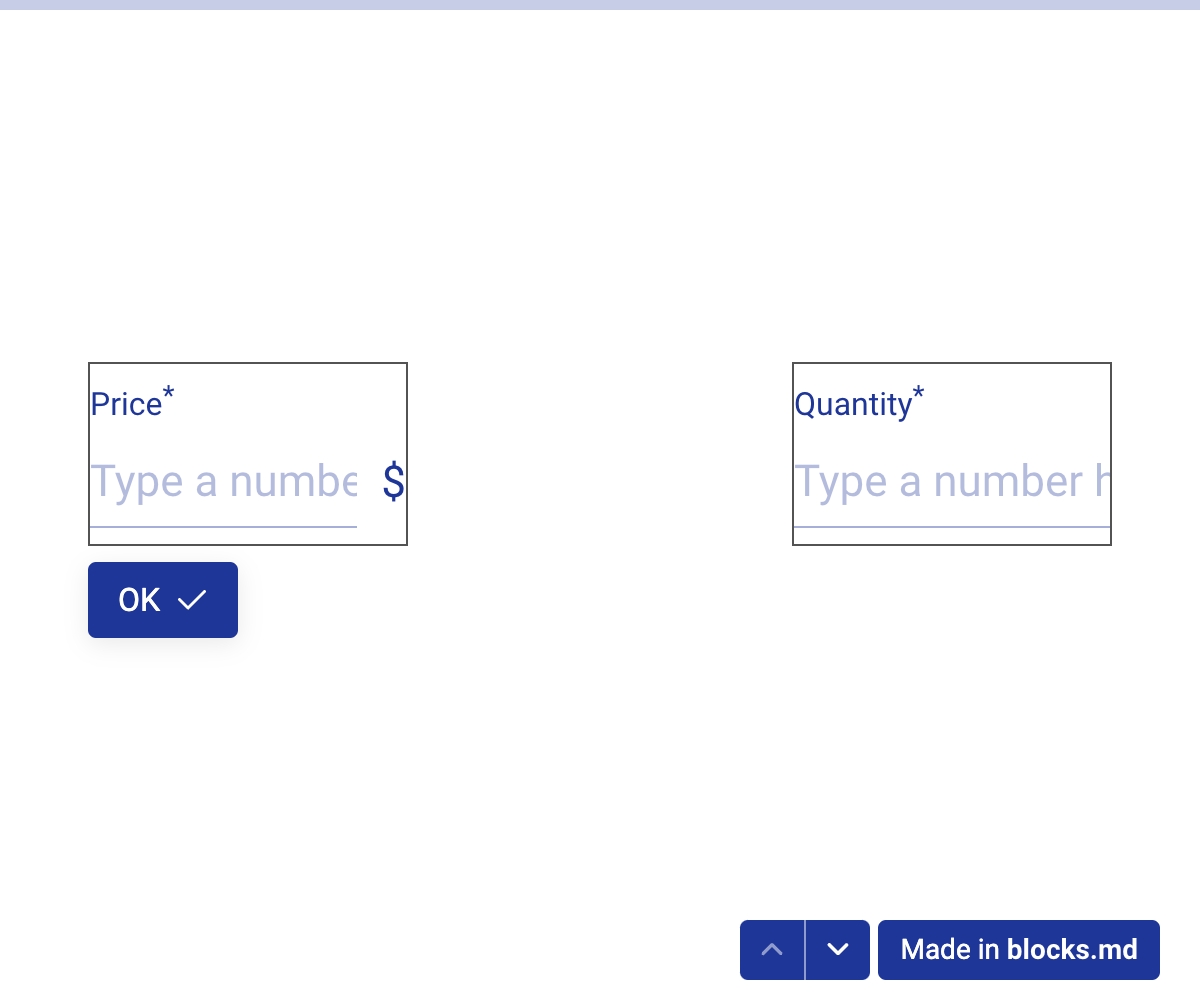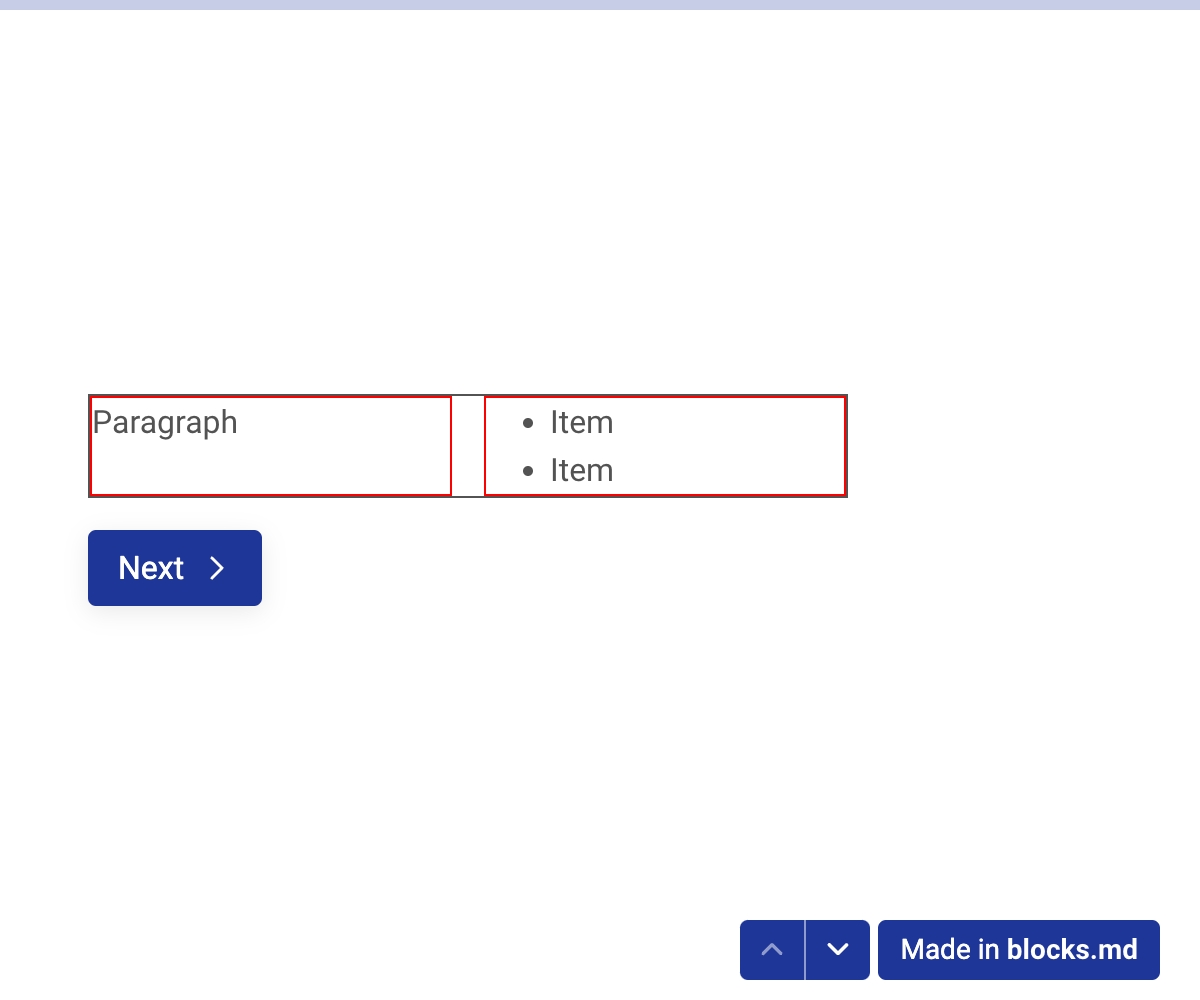Class names and attributes
Learn how to add class names and attributes, see the full list of available CSS utility classes, and find out how you can use Tailwind CSS.
Add class names and attributes
Add class names and other attributes (such as IDs, WAI-ARIA tags, etc.) to any block-level element by putting them inside [...] and placing this at the very start of the element's syntax. IDs start with #, class names start with ., and other attributes can be added as-is, for example, style="...".
Here's how you can add class names and attributes to all the elements that support it:
# [#my-heading .anchored] Heading
[style="font-size: 17px;"]
Paragraph
- [.col-6 .xs:col-6 .list-inside]
- List item
- List item
0. [.col-6 .xs:col-6 .list-inside]
1. List item
2. List item
> [.text-accent #my-blockquote aria-label="..."]
> Blockquote
``` [.col-6 #my-code-block] python
def add(a, b):
return a + b
```
[.col-6 .mt-3]
input* = TextInput(
| question = What is your answer?
)<div> element and data-binding
<div> element and data-bindingCreate wrapping <div> elements by putting content inside pairs of :::. The content inside can be any valid Markdown, such as headings, paragraphs, lists, form fields, etc. Class names and other attributes are supported via [...]. Moreover, you can bind one or more fields to a <div> element by adding the names of the fields inside {$...$} (separated by spaces), and placing this within the [...]. This means that whenever the value of a binded field changes, the content inside the <div> will be automatically re-rendered.
Learn more about data-binding.
Available CSS utility classes
The following CSS utility classes are included by default in blocks.md:
Layout
The content in blocks.md uses a grid based, 12-column system. This means you can add a .col-{value} class to any block-level element to have it occupy only a portion of the full width of the row. These class names come in the following formats:
.col-{value}(only for non-phone devices,≥ 576px).xs:col-{value}(only for phones,< 576px)
The {value} can be any integer between 1 to 12 (included) or auto. So for example, .col-4 would span 4 columns.

You can also push and pull each column using the following classes:
.col-start-{value}/.xs:col-start-{value}(setsgrid-column-start: {value}).col-end-{value}/.xs:col-end-{value}(setsgrid-column-end: {value})
Here, the {value} can be any integer between 1 to 13 (included) or auto.

<div> elements created using ::: can also be given .col-{value} classes. Moreover, each <div> element is also a 12-column grid, so these classes can also be used on sub-elements within the <div>.

<div>Color
.text-emphasis
color: var(--bmd-emphasis-color) (black in light mode and white in dark mode by default)
.text-accent
Sets color to accent
Display (and flex)
.d-inline-block
display: inline-block
.d-block
display: block
.d-inline-flex
display: inline-flex
.d-flex
display: flex
.align-items-center
align-items: center
.justify-content-start
justify-content: flex-start
.justify-content-center
justify-content: center
.justify-content-end
justify-content: flex-end
.d-none
display: none
Heading
.h1
Match the appearance of <h1>
.h2
Match the appearance of <h2>
.h3
Match the appearance of <h3>
.h4
Match the appearance of <h4>
.h5
Match the appearance of <h5>
.h6
Match the appearance of <h6>
.anchored
Adds an anchor link to the heading (# to itself)
Font size
.fs-lead
font-size: var(--bmd-font-size-lg) (18px by default)
.specific-fs-12
font-size: 12px
.specific-fs-14
font-size: 14px
.specific-fs-16
font-size: 16px
.specific-fs-18
font-size: 18px
.specific-fs-20
font-size: 20px
Font weight
.fw-lighter
font-weight: lighter
.fw-light
font-weight: 300
.fw-normal
font-weight: 400
.fw-medium
font-weight: 500
.fw-semibold
font-weight: 600
.fw-bold
font-weight: 700
.fw-bolder
font-weight: bolder
Form
.form-question
Match the appearance of a form field question
.form-description
Match the appearance of a form field description
Light/dark mode
.hide-lm
display: none only in light mode
.hide-dm
display: none only in dark mode
List
.list-inside
padding-left: 0 and list-style-position: inside
.list-unstyled
padding-left: 0 and list-style: none
LTR/RTL
.hide-ltr
display: none only in LTR
.hide-rtl
display: none only in RTL
Spacing
The class names for the margin and padding utilities come in the following formats: .m{sides}-{size} and .p{sides}-{size}.
{sides}
{sides}{sides}
Description
t
Sets margin-top or padding-top
b
Sets margin-bottom or padding-bottom
s (start)
Sets margin-left or padding-left (inverted in RTL)
e (end)
Sets margin-right or padding-right (inverted in RTL)
{size}
{size}{size}
Description
0
Sets margin or padding to 0
1
Sets margin or padding to 4px
2
Sets margin or padding to 8px
3
Sets margin or padding to 16px
auto
Sets margin-left or margin-right to auto
Text alignment
.text-start
text-align: left (inverted in RTL)
.text-center
text-align: center
.text-end
text-align: right (inverted in RTL)
.xs:text-start
text-align: left only on phones (inverted in RTL)
.xs:text-center
text-align: center only on phones
.xs:text-end
text-align: right only on phones (inverted in RTL)
Visibility
.invisible
visibility: hidden
Use with Tailwind CSS or other frameworks
blocks.md adds a bmd- prefix to all CSS classes. This prefix comes from the #! css-prefix = bmd- setting. You can see how all of the available utility classes discussed on this page have this prefix in blocksmd.css. This makes sure that there are no collisions with other CSS frameworks that you may choose to use.
Therefore, if you want to use Tailwind CSS with your forms and pages, you would need to do the following:
Set prefix to
noneby adding the#! css-prefix = noneline.Include Tailwind CSS in your
base.html.
After that, you can add Tailwind classes in [...] and everything should work as expected when you build your forms and pages by running the blocksmd command.
Last updated